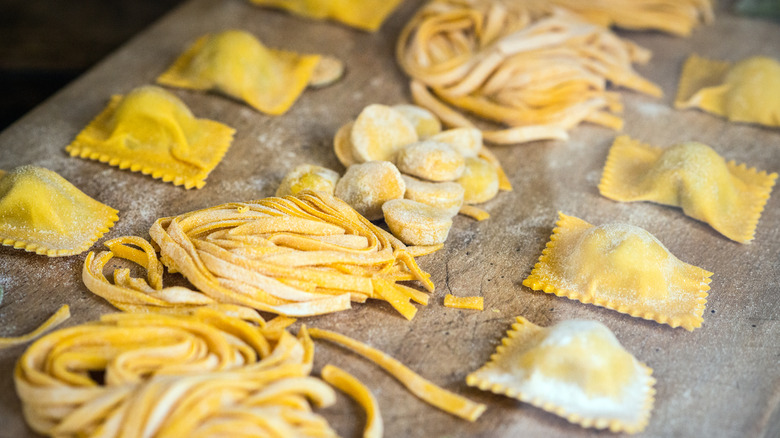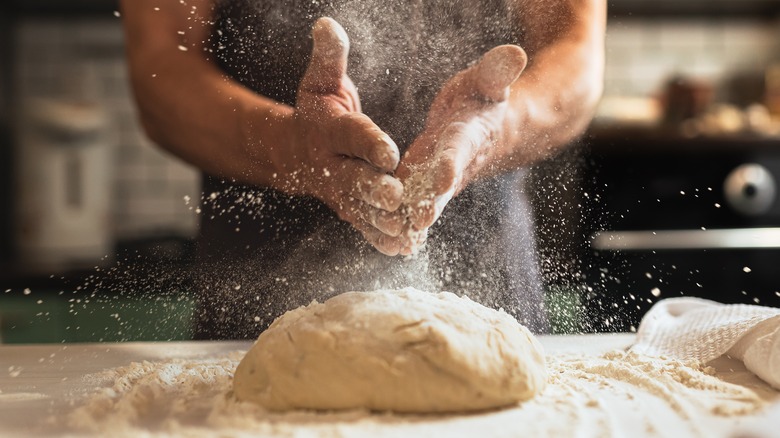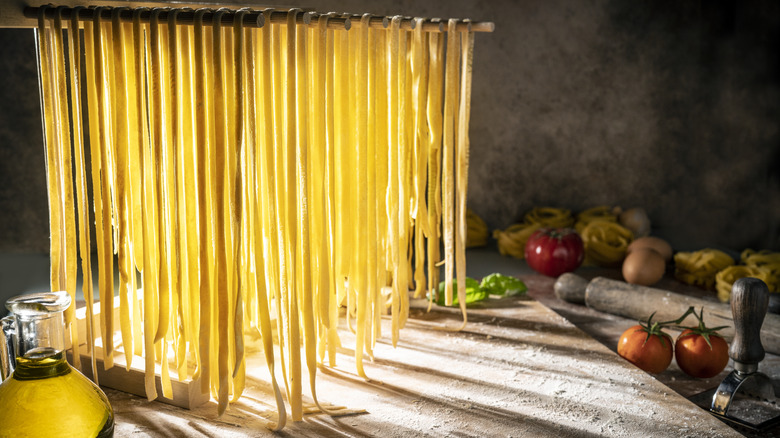Why Regular Flour Is The Worst Thing For Sticky, Fresh Pasta
By now, many of us have seen enough cooking shows where contestants make fresh pasta from scratch that we feel confident enough to try it at home, too. After all, it just takes flour, water, eggs, and some hand-pulling motions, then we get spaghetti, right?
Yes and no. At its most basic, making pasta at home does indeed only require a couple pantry staples, which makes it seem uncomplicated to prepare. But it requires skills and experience to deal with a common problem that plagues homemade pasta: Fresh pasta tends to stick together.
This is especially prevalent if you use regular flour (also known as plain or all-purpose flour) to both make the dough and dust the pasta. You may think you're stopping the pasta from sticking together, but in reality, the dusted flour gets combined with the dough instead of creating a protective layer. This makes the step meaningless. A better option is to dust the pasta with a different flour like semolina flour or 00 flour, so a thin coat separates the individual pasta strands or shapes and prevents them from clumping.
There are a couple different types of pasta flour
First, let's break down the common types of flour used to make pasta. There's regular flour, which is ubiquitous in general cooking and baking, so people are likely to have it in their pantry. It's made from a combination of hard wheat and soft wheat, and it has average levels of protein (approximately 8% to 12%). Flour's gluten strength is dependent on its protein levels; the higher the level of protein, the more elastic the dough will be, so you can pull it without breaking it.
Then, there's semolina flour, which is made from durum wheat. It's coarser than regular flour and has more protein (13%). Pasta made from this flour will have some bite, although the texture will be slightly grainy.
Finally, there's 00 flour – double zero means the finest grind – which is finely milled flour made from soft wheat varieties. It has 12% to 13% protein and contributes to the dense texture in many pasta and pizza dishes. Some purists would go so far as to say all pasta should be made from this type of flour, but that's actually not one of the top 10 pasta rules you should never break.
How else to prevent pasta from sticking
With this information, it might be tempting to go out and get different types of flour, but really, all you truly need to make fresh pasta is regular flour. Yes, it's possible the dough will become sticky, but there are few ways to mitigate this. One method, as mentioned above, is indeed to dust the dough or pasta shapes with semolina flour or 00 flour to create a protective barrier. The heavier and coarser semolina flour, especially, will sink to the bottom of the pot of boiling pasta, and so, you can drain it away. All you'll be left with then is a plate of perfect, al dente pasta.
However, that's not the only way to handle this situation. Another option is to make sure you dry the fresh pasta for 10 to 20 minutes, using either a special drying rack or just hanging it over a long ladle. Once it's dry to the touch, then you can easily form it into nests or start making a simple linguine.


